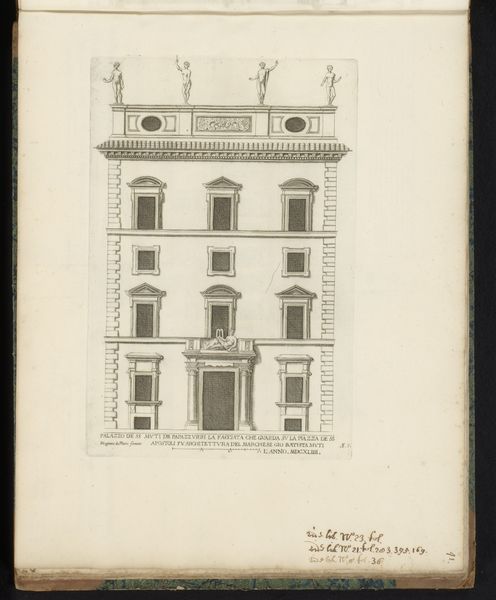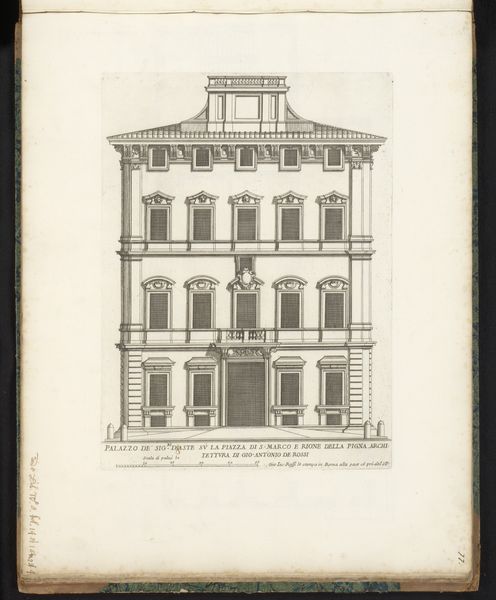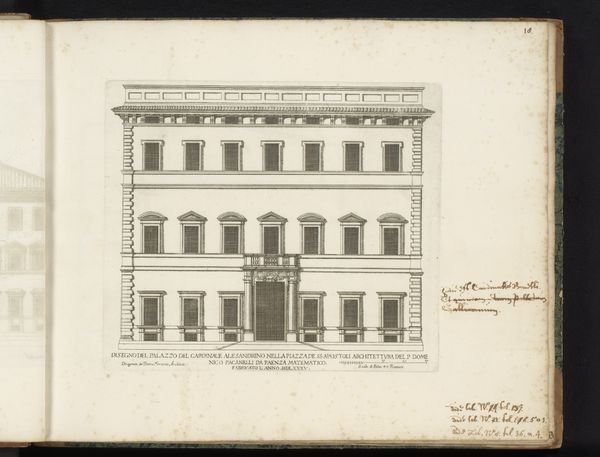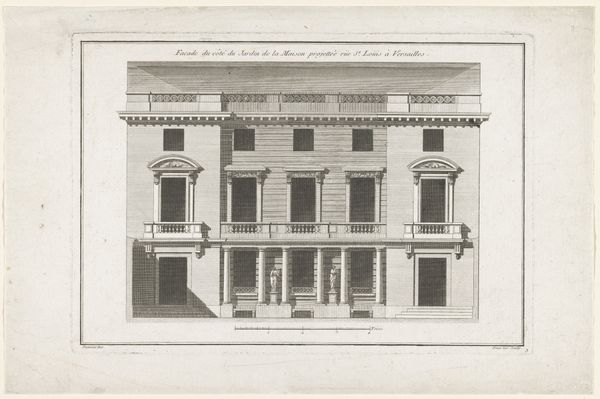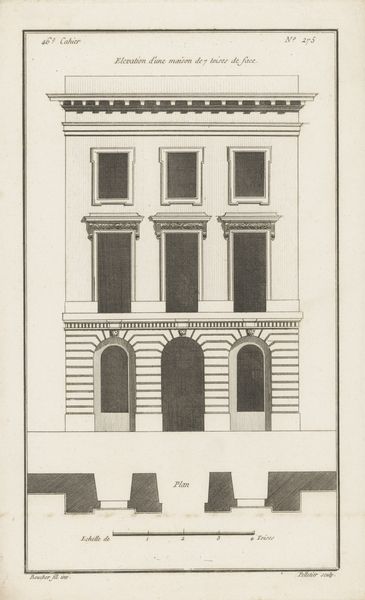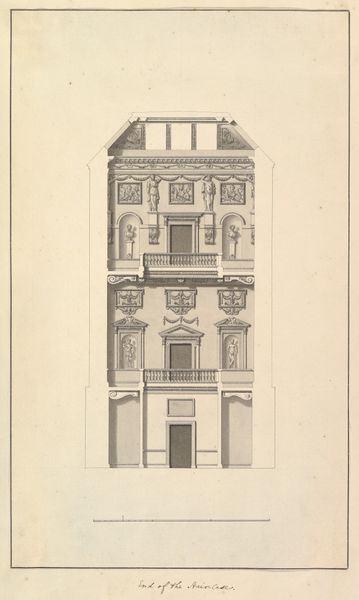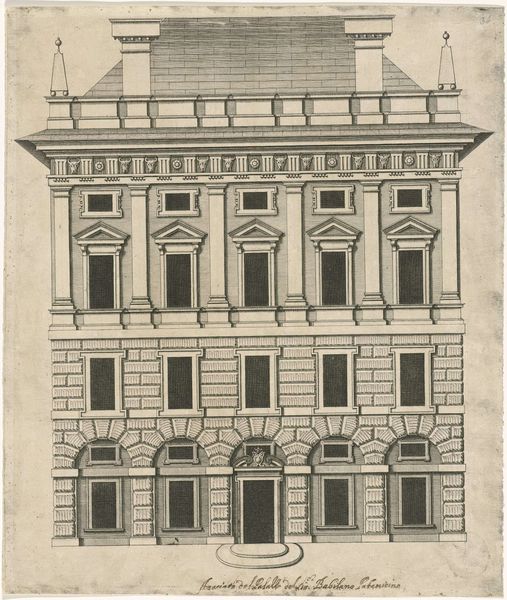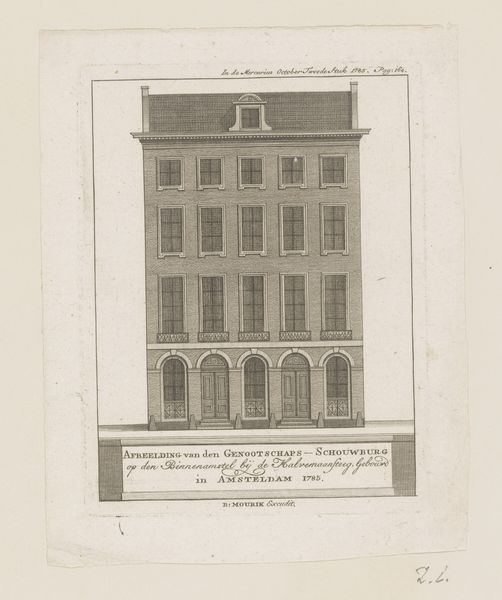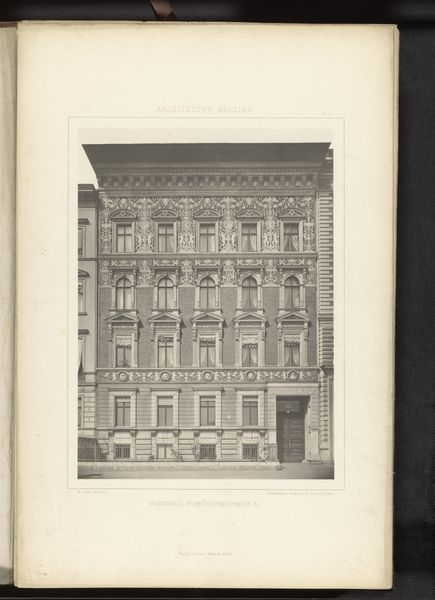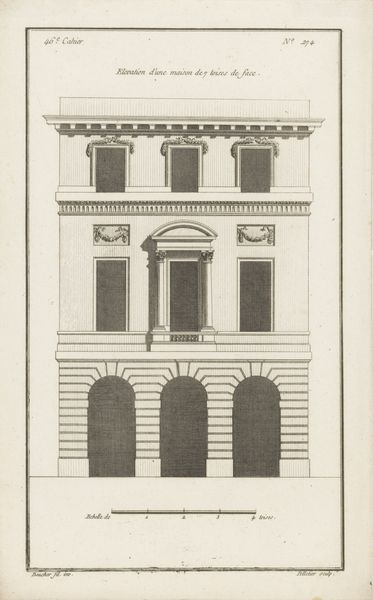
print, engraving, architecture
#
baroque
# print
#
geometric
#
line
#
cityscape
#
engraving
#
architecture
Dimensions: height 433 mm, width 218 mm
Copyright: Rijks Museum: Open Domain
Curator: What strikes me first is the quietude of this architectural study. It's Giovanni Battista Falda's "Gevel van de binnenplaats van Palazzo Falconieri," an engraving from after 1655, now residing in the Rijksmuseum. Editor: It has a sort of haunted stage-set feeling, doesn't it? So rigidly formal and ordered it feels unsettlingly still, like something about to burst into baroque excess! Curator: The lines certainly give it structure, delineating the layers of this courtyard façade. This meticulousness is characteristic of printmaking as a medium; labor, time, and material precision create that clean finish. We see echoes of class through the architectural choices themselves, for whom the architecture was made, for what use? The prints also played a crucial role in disseminating architectural ideas beyond their physical location. Editor: It feels very removed from lived experience. The repeated geometries and perfect symmetry remove me, disconnect me from any visceral understanding. No messy vines, no overflowing flower boxes, not a stray bird. How are we meant to inhabit such a sanitized place? I want to ruffle its perfectly placed architectural feathers, give it some chaos! Curator: Ah, but consider this not just as art, but as document. These prints served practical purposes—illustrating the rising architectural trends of the Baroque era. Note the strategic choice of line work, the varying widths suggesting depth, while the geometric forms embody control and rational order of space so prevalent in the upper classes who funded such displays of craft. What did this obsessive replication allow for or demand of both artist and the consumer of such prints? Editor: Perhaps that very replication is where the art hides. This imagined Falconieri backyard begins to resemble Piranesi’s haunting architectural prisons. As a perfect document of architectural vision, it almost entirely loses something else… any sense of actually belonging there. Still, I could get lost staring, letting the building itself slowly dismantle itself through overthinking its own pristine geometry! Curator: Indeed, this work invites reflections on the intertwined nature of artistic representation and material reality. Editor: What an odd, clever ghost it's become.
Comments
No comments
Be the first to comment and join the conversation on the ultimate creative platform.
